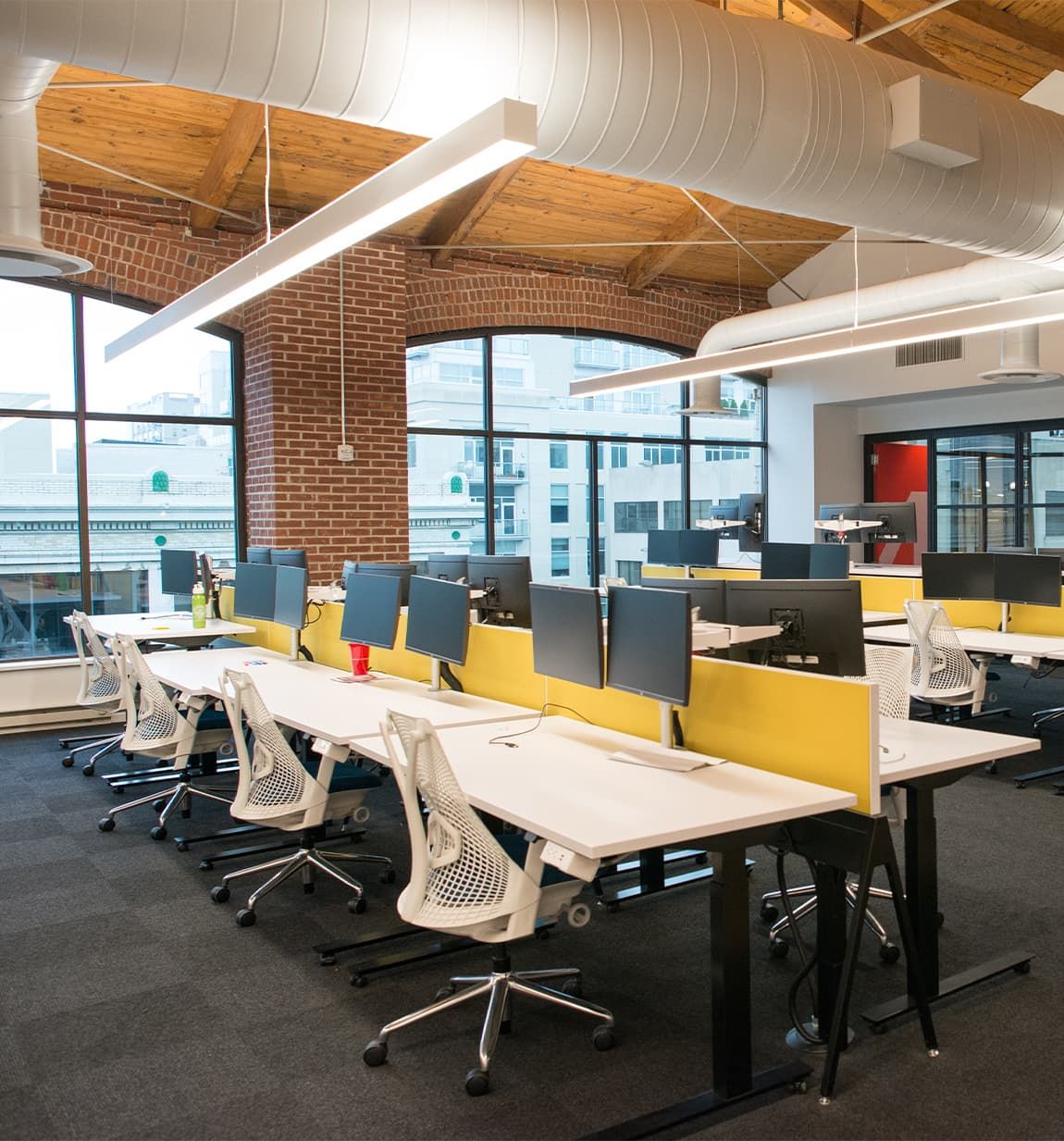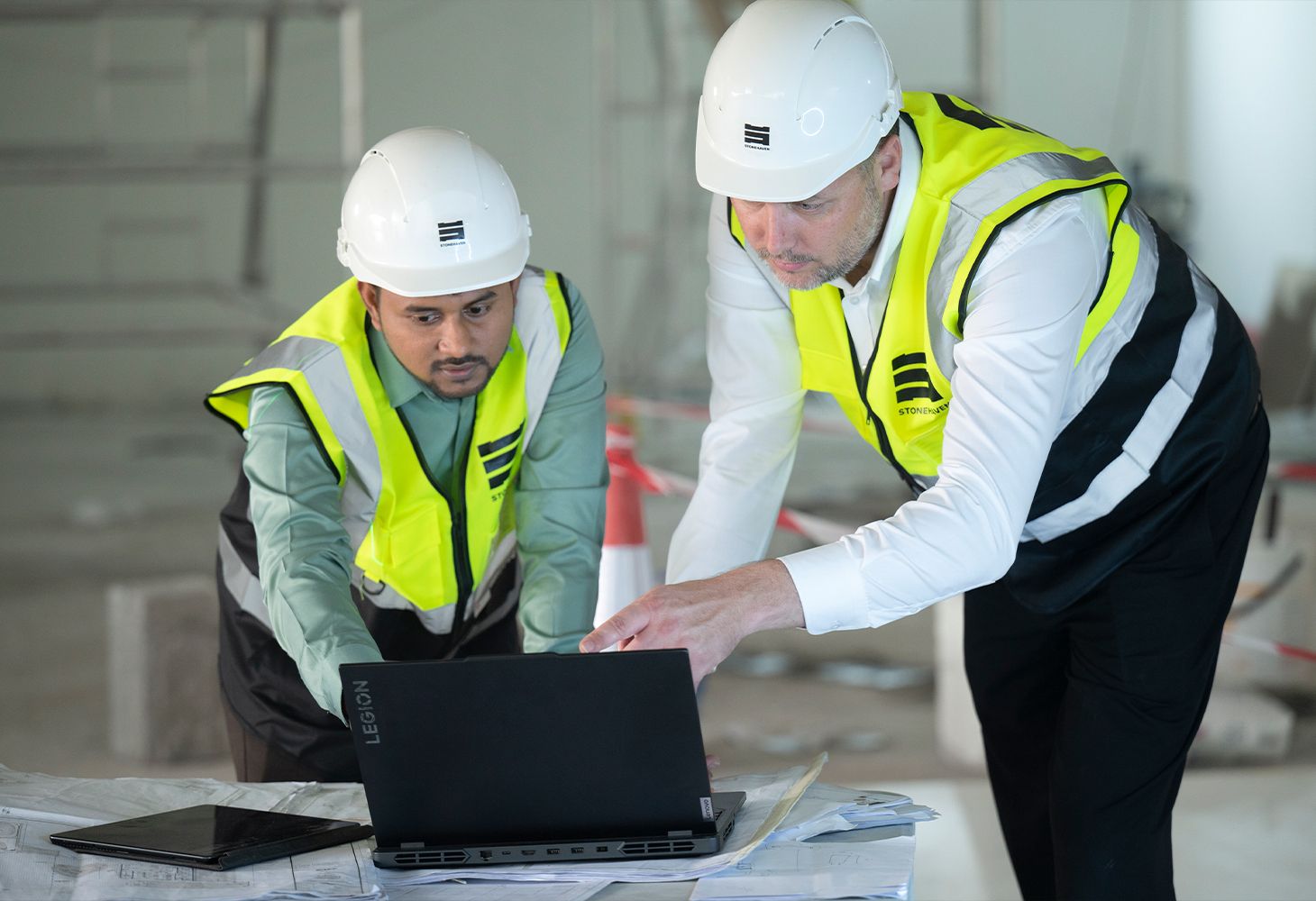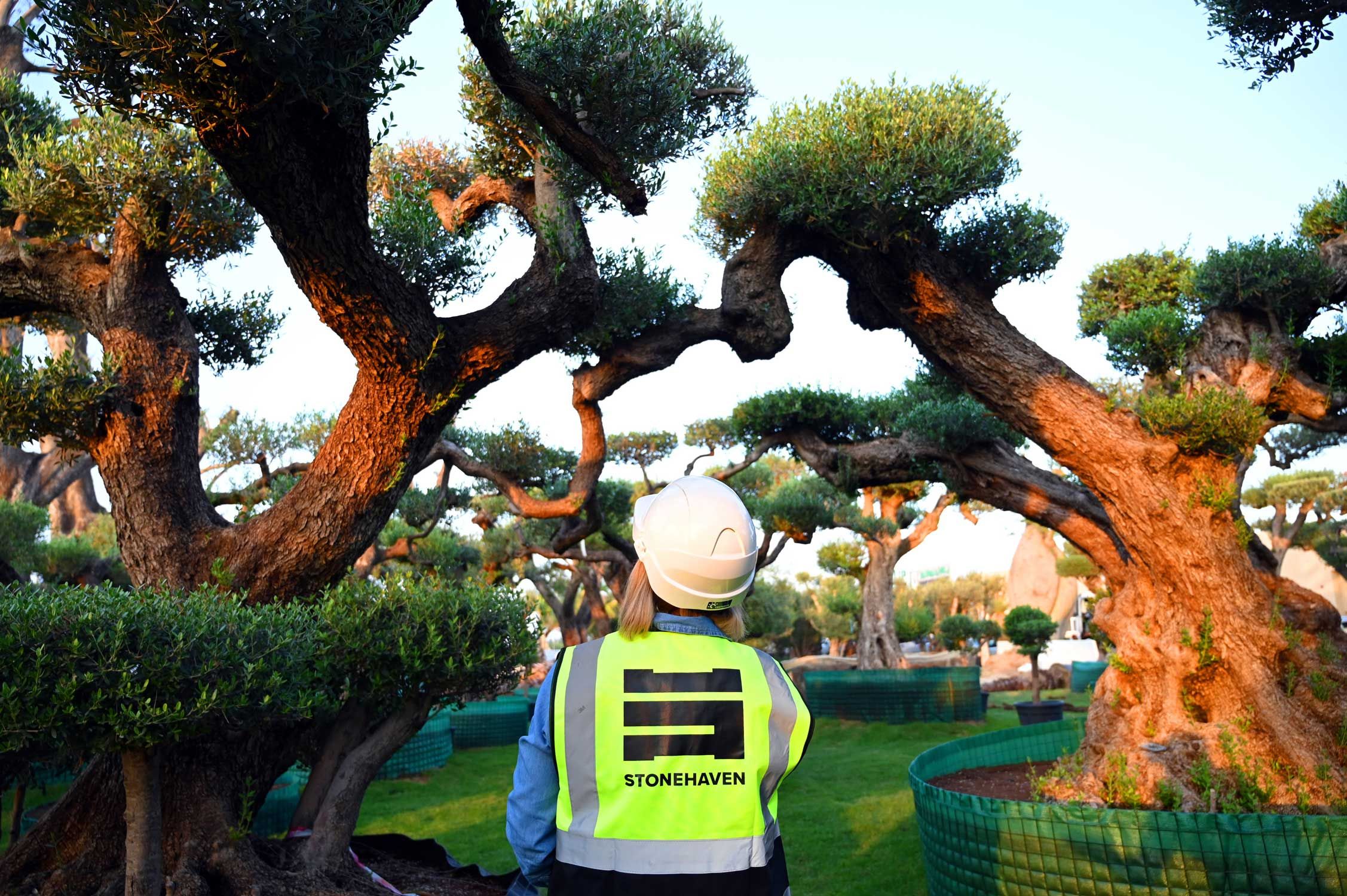The construction industry has long been a significant contributor to global economic growth, infrastructure development, and human advancement. However, it is also responsible for almost 37% of global carbon emissions, making it a focal point for environmental sustainability efforts. With climate change accelerating at an unprecedented pace, decarbonisation in construction is no longer optional—it is an urgent necessity.
Decarbonisation involves reducing greenhouse gas (GHG) emissions associated with construction activities and building operations. As countries worldwide aim for net-zero emissions, the construction sector must adapt its processes, materials, and designs to reduce its environmental impact. This requires robust carbon accounting methods, innovative materials, renewable energy integration, and efficient energy management practices.
The construction industry has reached a turning point. By embracing decarbonisation, it can lead the way in creating infrastructure that not only supports economic growth but also protects the planet for future generations. Let’s dive deeper into what decarbonisation entails and how it can transform the construction landscape.
What is Decarbonisation?
Decarbonisation is the process of reducing or eliminating carbon dioxide (CO₂) emissions, particularly from activities that rely on fossil fuels. In the construction industry, this concept encompasses a wide range of efforts to minimise greenhouse gas emissions across the lifecycle of a project—from material production to the operation and eventual demolition of a building.
At its core, decarbonisation addresses both operational carbon and embodied carbon. Operational carbon refers to the emissions generated during the use of a building, such as heating, cooling, and lighting. Embodied carbon, on the other hand, accounts for emissions from the extraction, manufacturing, and transportation of construction materials, as well as those generated during the construction process itself.

The significance of decarbonisation lies in its ability to align the construction sector with global climate targets, such as those outlined in the Paris Agreement. These targets aim to limit global warming to 1.5 degrees Celsius by reducing emissions to net-zero by mid-century. Achieving this will require a transformation in the way buildings are designed, built, and operated.
Governments, businesses, and consumers are increasingly recognising the importance of decarbonisation, creating a strong push for innovation and collaboration across the construction value chain. By understanding the principles of decarbonisation, construction companies can take meaningful steps toward reducing their carbon footprint and contributing to a more sustainable future.
How Can We Decarbonise Construction?
Decarbonising the construction industry requires a multifaceted approach, involving changes to materials, processes, and energy sources. Here are some of the most effective strategies:
- Adopting Low-Carbon Materials: Traditional construction materials like concrete and steel are among the largest sources of embodied carbon. By using alternatives such as engineered timber, recycled steel, and low-carbon concrete, the industry can significantly reduce its emissions. Innovations like bio-based materials and 3D-printed components are also emerging as viable options.
- Energy-Efficient Designs: Designing buildings with energy efficiency in mind can reduce operational carbon emissions. Features such as high-performance insulation, natural ventilation, and energy-efficient appliances help minimise energy consumption throughout a building’s lifecycle.
- Renewable Energy Integration: Construction sites can transition to renewable energy sources, such as solar panels or wind turbines, to power operations. Similarly, incorporating renewable energy systems into building designs—such as rooftop solar panels—can lower a building’s reliance on fossil fuels.
- Circular Economy Practices: Recycling and reusing materials can significantly reduce waste and emissions. Construction companies can design for disassembly, ensuring that materials can be repurposed at the end of a building’s life.
- Digital Tools and Innovations: Technologies like Building Information Modelling (BIM) enable precise planning and optimisation of resources, reducing material waste and energy use.
By adopting these strategies, the construction sector can significantly reduce its environmental footprint while paving the way for innovation and sustainability.
What is the Process of Decarbonisation?
The process of decarbonisation in construction involves several key steps, each designed to systematically reduce emissions across the lifecycle of a project. Here’s how it works:
- Carbon Audit and Assessment: The first step is to conduct a comprehensive carbon audit to quantify the emissions associated with a project. This involves analysing the supply chain, construction processes, and operational energy use to identify the main sources of emissions.
- Net-Zero Target Setting: Once the baseline emissions are identified, stakeholders can set measurable decarbonisation targets. These goals should align with international standards, such as net-zero carbon targets or science-based climate goals.
- Planning and Implementation: Decarbonisation strategies are then integrated into the project plan. This might include specifying low-carbon materials, designing energy-efficient systems, and planning for renewable energy installations.
- Progress Reporting: Regular monitoring is essential to ensure that emissions reduction measures are effective. Carbon accounting methods and tools can help track progress and provide transparency through detailed project reports.
- Continuous Improvement: Decarbonisation is an ongoing process. Feedback from completed projects should inform future efforts, driving continuous innovation and improvement in sustainable construction practices.
By following this process, construction companies can systematically reduce their emissions, meet regulatory requirements, and contribute to global sustainability goals.

Challenges in Decarbonising Construction
Despite the growing awareness of the importance of sustainability, decarbonising construction faces significant challenges that span policy gaps, supply chain complexities, financial constraints, and skill shortages. These barriers, if left unaddressed, threaten to slow the industry’s progress toward meaningful carbon reduction.
1. Lack of Regulation and Ineffective Procurement Practices
One of the most pressing challenges in the construction industry is the lack of comprehensive regulations and standards promoting the adoption of low-carbon practices. Governments in many regions have not yet implemented consistent or enforceable policies to guide the use of sustainable construction methods. This regulatory void leaves companies uncertain about the best approaches to adopt and creates resistance to change. Moreover, ineffective procurement practices remain a major bottleneck. Many procurement systems prioritise cost above environmental considerations, often awarding contracts to suppliers and contractors who do not prioritise sustainability. Without clear incentives or mandates, businesses have little motivation to shift toward more expensive but sustainable options, such as low-carbon concrete or green steel with a responsible procurement strategy.
Government intervention can be a game-changer in this space. Policy reforms introducing incentives such as tax rebates, subsidies for sustainable materials, and penalties for excessive emissions could accelerate industry-wide adoption. Additionally, standardising carbon reporting requirements can encourage companies to become more transparent about their emissions and take action to reduce them.
2. Decarbonising the Supply Chain
The construction supply chain is a significant contributor to the sector's overall carbon emissions. From material extraction and processing to transportation and assembly, every step in the supply chain adds to a project's carbon footprint. For instance, the production of traditional materials like cement and steel is energy-intensive and heavily reliant on fossil fuels, making them some of the largest sources of embodied carbon.
Transportation is another critical issue. Materials often travel thousands of miles from extraction sites to manufacturing facilities and, finally, to construction sites. This logistical journey results in high emissions, particularly if fossil-fuel-powered vehicles are used. Additionally, ensuring ethical labour practices and adherence to sustainability standards across global supply chains is a growing challenge, especially for companies sourcing materials from regions with less stringent regulations.
Overcoming these challenges requires a combination of innovation and collaboration. Clients can work with suppliers who prioritise sustainability, such as those offering locally sourced materials or low-carbon alternatives. Adopting digital tools, like blockchain technology, can enhance supply chain transparency, ensuring compliance with ethical and environmental standards. Investment in green logistics solutions, such as electric or hydrogen-powered transport vehicles, can also play a pivotal role in reducing emissions associated with material transportation.
3. Financial Constraints
One of the most significant barriers to decarbonisation is the high initial cost of implementing sustainable practices and technologies. Low-carbon materials, green certifications, and renewable energy installations can require considerable upfront investment. This is particularly challenging for small- and medium-sized enterprises (SMEs) operating on tight budgets. Without immediate financial returns, many businesses are hesitant to take the plunge into decarbonisation.
While these challenges are significant, they are not insurmountable. With concerted efforts from policymakers, industry leaders, and innovators, the construction sector can overcome these barriers and create a more sustainable future.

What are the Opportunities in Decarbonising Construction?
While the challenges in decarbonising construction are formidable, they also pave the way for significant opportunities that can benefit businesses, the environment, and society. By seizing these opportunities, the industry can position itself as a global leader in sustainability while unlocking financial and reputational advantages.
1. Green Building Certifications
One of the most tangible opportunities for construction companies lies in pursuing green building certifications such as LEED (Leadership in Energy and Environmental Design), Estidama Program (In the UAE) and BREEAM (Building Research Establishment Environmental Assessment Method). These certifications not only demonstrate a commitment to sustainability but also serve as a powerful marketing tool. Certified green buildings are increasingly in demand among environmentally conscious clients and investors. They also often enjoy higher market values, reduced operational costs, and access to tax benefits and government incentives.
Achieving such certifications requires adopting practices like using energy-efficient designs, low-carbon materials, and renewable energy sources. Companies that excel in these areas can differentiate themselves from competitors and secure long-term contracts with clients who prioritise sustainability.
2. Material and Technology Innovation
The drive toward decarbonisation has spurred innovation in materials and technologies, presenting a wealth of opportunities for construction firms to explore. For example, low-carbon concrete, engineered timber, and recycled steel are gaining traction as viable alternatives to traditional materials. Innovations like bio-based materials—such as hempcrete or mycelium-based building blocks—are also entering the mainstream. These materials offer not only lower emissions but also improved performance in terms of insulation, durability, and recyclability.
Emerging technologies like carbon capture and storage (CCS) and green hydrogen are transforming high-emission industries, such as steel and cement production. Construction companies that invest in these technologies establish themselves as pioneers in sustainable building practices. Digital tools like Building Information Modelling (BIM), AI-driven energy optimisation, and IoT-enabled energy monitoring systems also present opportunities to design and operate buildings more efficiently.
3. Consumer and Market Demand
Public awareness of climate change has reached unprecedented levels, leading to increased demand for sustainable infrastructure. This shift in consumer preferences represents a significant opportunity for construction firms to capture market share by offering eco-friendly solutions. Businesses that proactively adopt decarbonisation practices are more likely to attract environmentally conscious clients, investors, and partners. This, in turn, enhances brand reputation and positions companies as industry leaders.
4. Government Incentives and Collaborations
Governments worldwide are introducing policies and incentives to encourage decarbonisation. Subsidies, grants, and tax breaks for green construction projects make it easier for companies to adopt sustainable practices without bearing the full financial burden. Collaborations between public and private sectors also open the door to shared resources, expertise, and funding for decarbonisation initiatives.
5. Leadership and Competitive Advantage
As sustainability becomes a key differentiator, companies that embrace decarbonisation early can secure a competitive edge. By leading the way in adopting sustainable practices, construction firms can position themselves as innovators, attract top talent, and build long-term client relationships.
The opportunities in decarbonising construction are vast, and the potential benefits extend far beyond compliance and cost savings. By embracing sustainability, the industry can contribute to a healthier planet while achieving lasting success in an evolving market.
Conclusion
Decarbonisation is not just a responsibility—it’s an opportunity for the construction sector to lead in innovation and sustainability. By addressing challenges such as supply chain emissions, skill gaps, and regulatory barriers, the industry can unlock its full potential. Through collaborative efforts, advanced technologies, and investment in upskilling, the construction sector can contribute to a more sustainable world.
About us
Stonehaven is a trusted project management company and construction consultant based in Dubai, offering comprehensive construction management services across the UAE with offices located in Dubai, UK and Sri Lanka. As one of the leading project management companies in Dubai, we manage projects from inception to completion, ensuring quality, efficiency, and cost-effectiveness at every stage.
We deliver value through expert project management consultancy services, tailored to meet the unique needs of each client. Our core services include Cost Management, Project Management, Construction Supervision, Engineering Support, Design Support, and Marketing & Communications. Whether you’re looking for construction consultants or project managers in the UAE and wider GCC region, Stonehaven is your trusted partner for achieving excellence in your next project.
At Stonehaven, we specialise in providing expert carbon audit services to help construction firms achieve their sustainability goals. As a leading construction carbon accounting company, we offer tailored solutions, from detailed carbon footprint calculations to comprehensive carbon reporting services. Partner with us to ensure your projects meet sustainability standards and contribute to a greener future.
Contact us today to explore how we can transform your construction projects with effective carbon accounting methods.

















